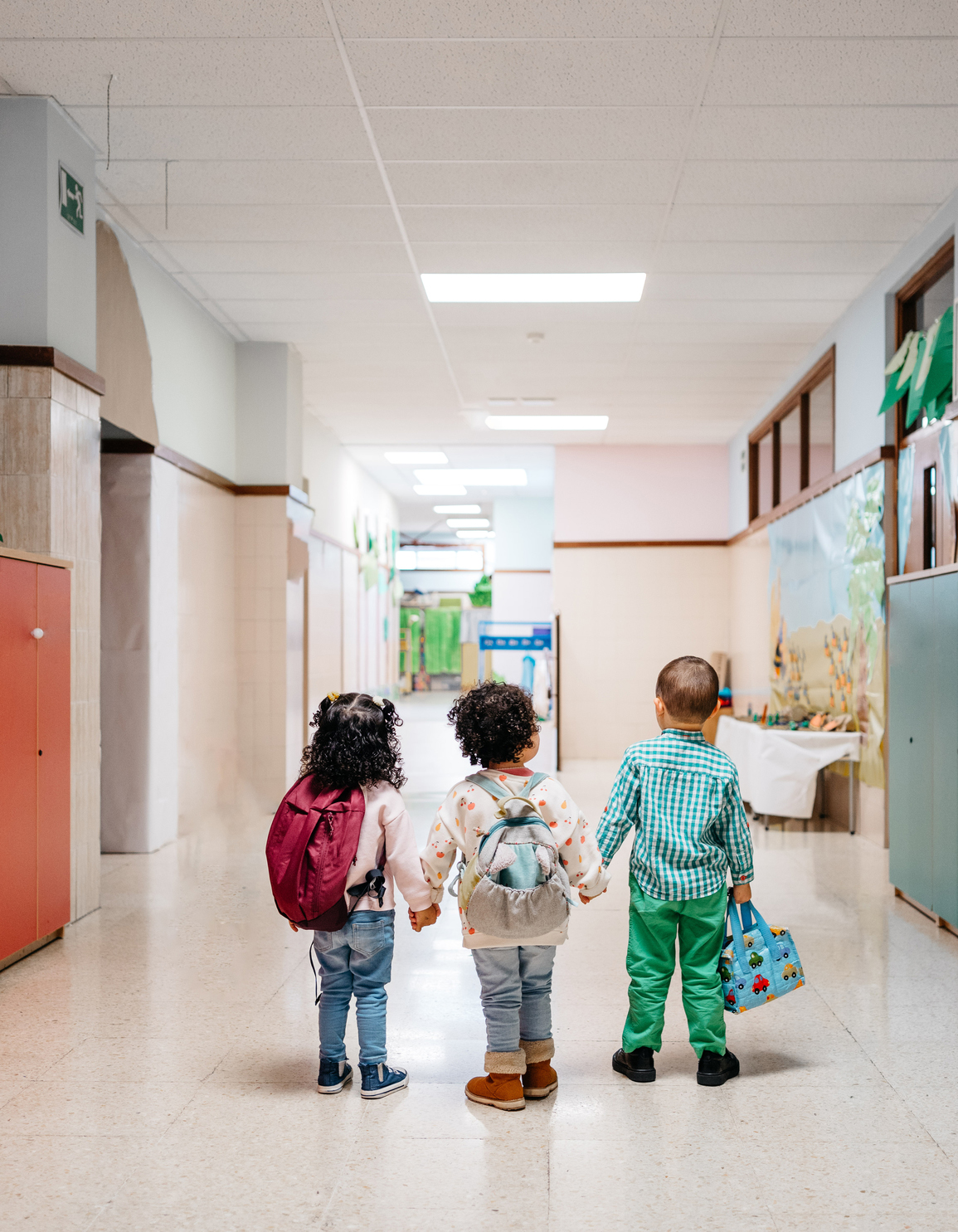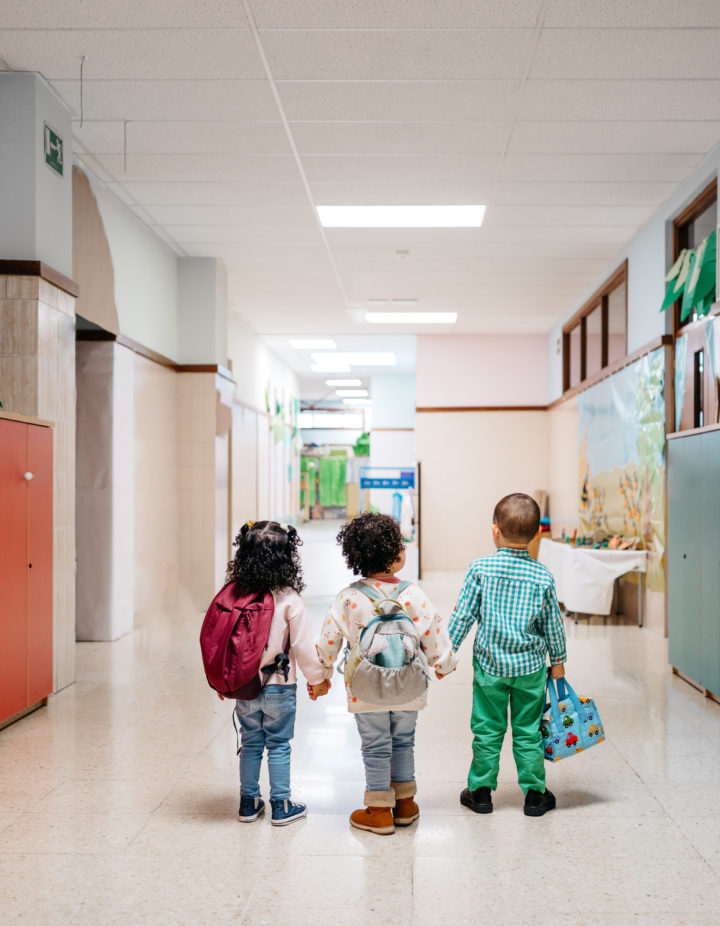If you’re anything like us – and we know you are – you’ve been researching preschools since your 12th week of pregnancy. But WTF is with all of the philosophies and POVS on the preschool experience? Isn’t it just circle time, snack, play and nap? So we thought. Below, we’ve outlined the top three educational approaches around the preschool experience so that you can come to that swanky preschool’s open house TOTALLY informed and engaged. Good luck!
Montessori
The Gist: This child-centered educational philosophy centers around teachers as “guides” while students learn at a pace that’s entirely their own. There’s no course correction or judgements, it’s simply students navigating through the classroom at their will. The same goes for students in older grades. Montessori’s focus is to let kids learn at their pace in conjunction with how classrooms are organized. Kids are grouped across age groups, where the older children use their experience to help mentor the younger kids. Often the kids will have a teacher for multiple years to strengthen that bond.
The Plus: Montessori is said to help kids learn leadership skills and independence early on, which enables them to find success later. Montessori parents like the focus on academic quality of the class environment and individual learning, as well as student-teacher relationships. Montessori can also be a great program for children with special needs.
Waldorf
The Gist: Waldorf founder Rudolph Steiner, a scientist and philosopher, wrote in the early 1900’s that this kind of education is not a pedagogical system but an art – the art of awakening what is actually within the human being.” Groovy. So what does that mean exactly? Schools are play-based, where kids can rely on a dependable routine. Certain days of the week might be set aside for baking or gardening. They also follow a similar approach to classroom composition as Montessori schools: mixed-age classrooms with the same teacher for multiple years.
According to Waldorf schools, students are successful, contributing members of society when they develop into multi-faceted individuals with the desire and drive to be learning. For this to happen, students need to develop creative thinking that is imaginative, flexible and focused. Through Waldorf, they build emotional intelligence, empathy and self-esteem; physical vitality, stamina and perseverance – attributes that the approach believes is already in them. Academic subjects are kept from children in Waldorf schools until a much later age than Montessori.
The Plus: Parents might choose Waldorf as it has a proven track record of fostering children into successful adults. Teachers work with kids based on their unique talents and challenges. School is not a competition, but rather a time to learn when it’s right for that child in particular.
Reggio Emilia
The Gist: A project-based philosophy, lessons are determined based on the interest of students. If a kid shows interest in learning about something, the teacher will engage them in a teacher-framed approach. Teachers will not only document on paper how students develop and learn, but will also take photos and videos and review the information with students throughout the year to help them realize their own growth potential.
Specifically geared towards development at the preschool or kindergarten level, the method focuses on self-guided curriculum, where the students learn curriculum through exploration.
The Gist: Parents who want their child to be citizens of the world might opt for Reggio Emilia. Kids learn about cooperation through many projects, particularly how to solve problems and resolve conflicts. It’s about empowering kids through exploration, a self-guided curriculum and co-learning with their teacher to explore the world around them as they develop higher-order thinking, analysis and synthesizing skills.




